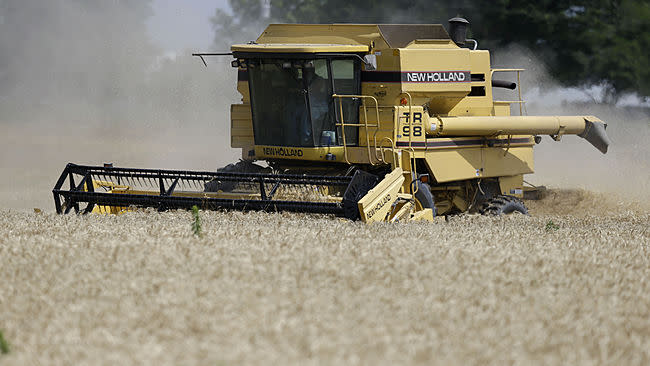Heavy rains across midwest, eastern US may cause surge in food prices later this year

Heavy rain across the Midwest and East this spring and early summer may be responsible for a rise in consumer food prices later this year.
Century-old rain records were shattered in Ohio during June, with as much as 14.7 inches of rain falling.

"In the southern Plains, it's been pretty favorable with the recharge of the subsurface water supply," AccuWeather Senior Meteorologist Dale Mohler said. "But from Missouri to western Ohio, the rain has done more harm than good."
It's always good to get rain, Mohler said, but with a flatter landscape, large ponding areas developed and drowned out the crops.
"Fieldwork at Last" read the headline in the July 6 edition of the Ohio Crop Weather bulletin issued by the National Agricultural Statistics Service (NASS), a branch of the U.S. Department of Agriculture.
"Heavy rains the past several weeks have kept farmers out of fields and anxiously waiting to see how their crops would fare from the unfavorable conditions," the report stated.
RELATED:
Drought Shaming: California's New Trend of Exposing Water Wasters
Intense Heat, Wildfire Risk to Continue in the Western US
Water Theft Becomes Common Consequence of Ongoing California Drought
Problems have also been reported in Michigan, Missouri, New York and the New England states, the NASS said.
Soybeans are taking the hardest hit, according to Mohler.
As of July 6, soybean planting in Missouri reached 60 percent, 33 percentage points behind the five-year average, the NASS reported.
Illinois farmers planted 94 percent of their soybean crop, compared to 100 percent last year and the five-year average of 99 percent.
The rain started and farmers "got way behind," Mohler said.
"It's pretty much too late," he said. "The season started off looking good but then they kept getting more and more rain."
Corn has done better because it was planted earlier than soybeans, Mohler said.
With the same demand, any market shortages due to the weather will result in higher futures prices, meaning more money to farmers who have sizable harvests - a matter of basic economics, Mohler said.
It will also mean high prices for those buying foodstuffs made with soybeans, cornstarches and corn sugars.
"The consumer is going to have to pay more," Mohler said.
The weather pattern looks drier and warmer for the short term, which will allow rain-hampered farmers to get into the fields and try to salvage their harvests, Mohler said.

